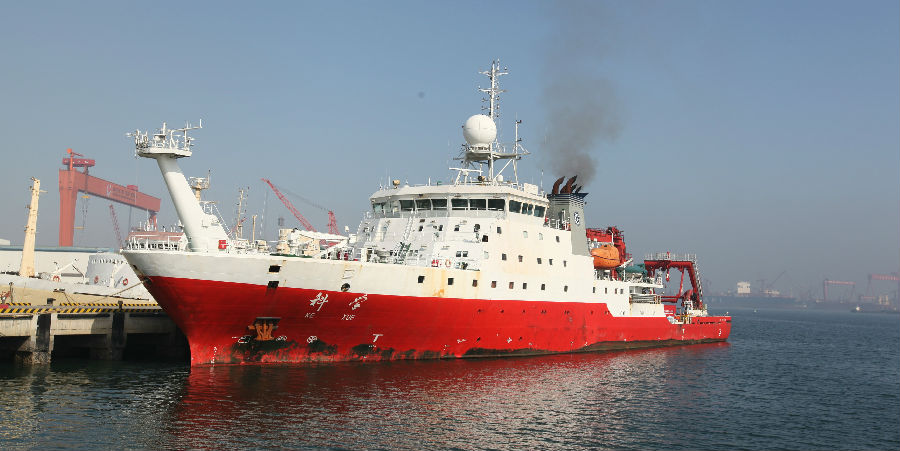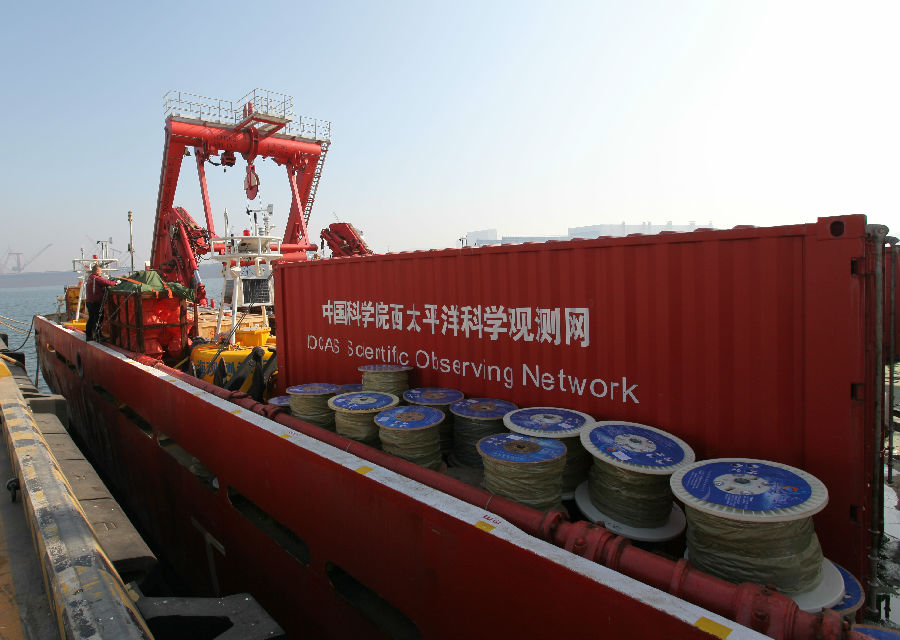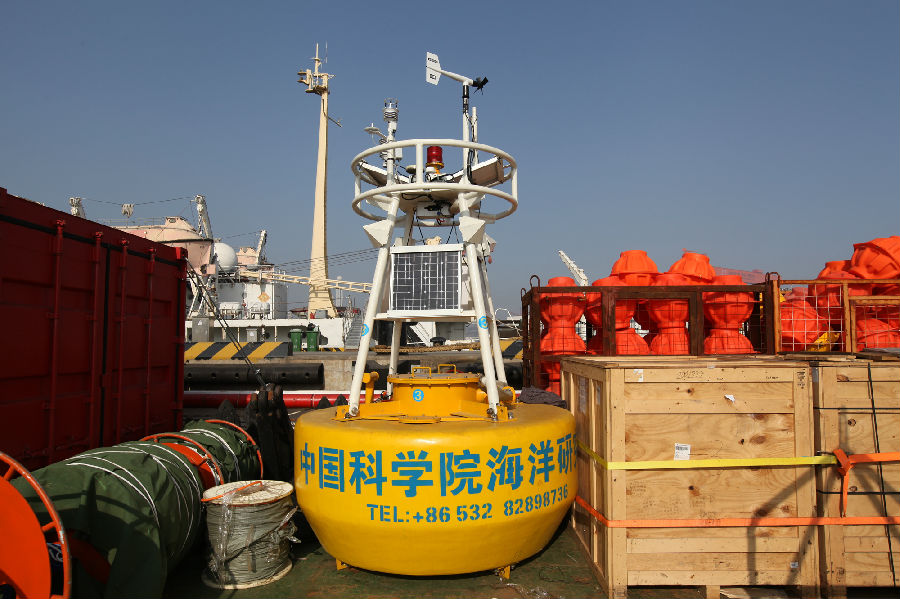R/V Kexue Departed from Qingdao to Maintain and Upgrade the Scientific Observation Network in Western Pacific Ocean
R/V Kexue set sail from Xuejiadao pier of Institute of Oceanology, Chinese Academy of Sciences (IOCAS) at 11 am on Nov. 19, 2018, with a team of 77 researchers from IOCAS, IOACAS (Institute of Acoustics of CAS), Ocean University of China, East China Normal University and other institutions, departing on a mission to maintain and upgrade the scientific observation network in western Pacific Ocean. Prof. Jianing WANG from IOCAS is the chief scientist of this cruise assisted by Prof. Xiangguang ZHANG as mission leaders.

This voyage, as one of the most important missions of NPOCE on 2018’s agenda, is divided into 2 phases, aimed to maintain and upgrade the scientific observation network formed by Chinese scientists in western Pacific Ocean while deploying new subsurface moorings. NPOCE is designed to observe, simulate, and understand the dynamics of the NWP ocean circulation, joined by 19 institutions from 8 countries. This joint project has been successfully running for 8 years, signaling China a historic breakthrough from following to leading on the research of western Pacific Ocean.

Western Pacific Ocean, the core of NPOCE field observation, is the gateway to vast oceans, which is of great importance on ocean environmental safety. It has the complicated and changeable ocean current and the largest warm pool, where typhoon cyclone form and occur frequently. Changes in western Pacific Ocean could regulate the Monsoon, cyclone path and precipitation in China, exerting great efforts on global climate (El-Nino/La-Nina).

This voyage will conduct the investigation on hydrologic process and observing western ocean current flow, zonal current and ocean current in middle and deep ocean simultaneously by maintaining and upgrading the buoy network on western Pacific Ocean. The voyage will also promote the data transmission through buoy network after a successful experiment on real-time data transmission while attempting to carry out real-time data transmission in the depth of 6000 meters as well as delivering 3 observation buoy, 20 subsurface moorings, and 5 Argo buoys. The voyage will view the data from CTD, LADCP, shear profiler, ADCP, metrological station and bio-network to look into the 3 dimensional structure of the water circulation and warm pool in west Pacific Ocean, as well as the principle of multi-scale variation and the improvement of ocean model.
Based on the schedule, R/V Kexue will return to Qingdao in the early February of 2019 .